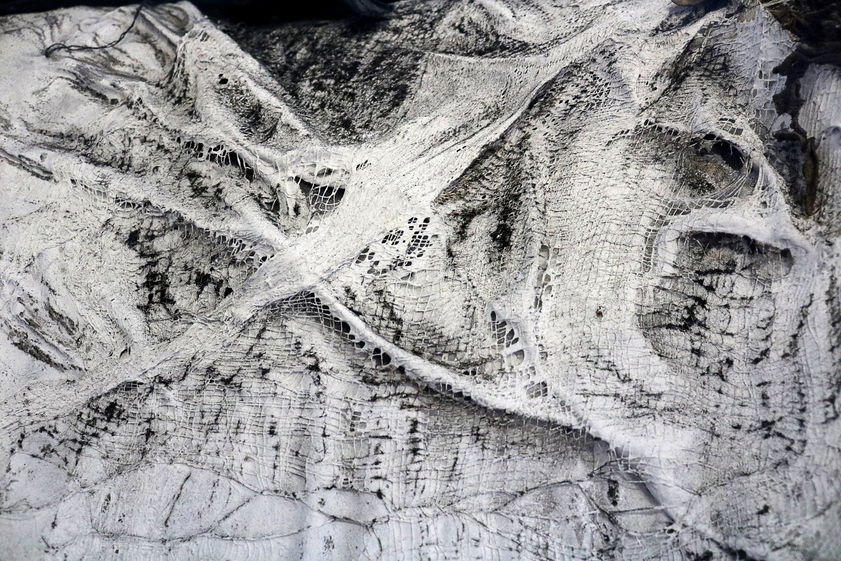
Into the Night Forest

Figure 1: 2,4m x 2,4m Acrylic paint, sawdust, charcoal, bedsheet, wax.

Figure 2: 1,2m x 2,4m x 2,2m Acrylic paint, gauze, sawdust, bedsheet, wax, wire, pastel, gauze dress Figure 3: 1,4m x 2,4m x 0,5m Acrylic paint, ink, bedsheet, charcoal, bed base cover, sawdust

Figure 13: 2,4m x 2,4m Acrylic paint, wax, sawdust, charcoal, wire, heaters

Figure 1: 2,4m x 2,4m Acrylic paint, sawdust, charcoal, bedsheet, wax.
“Into the Night Forest, 2021”
Klaré van Heerden
It is a well-known fact that rape victims suffer horrific trauma during the event of rape. However, the lasting effect of rape trauma is lesser-known. Dr Rothbaum explains that a month after rape, 27% of rape victims have suicidal tendencies. 1-16 years after the event of rape, this number increases to 50%. Post-Traumatic Stress Disorder (PTSD) caused by rape is often more intense and more challenging to live with. With limited knowledge about the horrid lasting effect of rape trauma, this body of work contributes as research to our understanding of what victims suffer through after the event of rape. This body of work aims to create a space where victims can be heard and a space to bring the unfathomable reality of the lives of victims into the light.
This installation explores the liminal space after the event of rape. It explores the PTSD symptoms caused by rape, such as; depression, dissociation, mental paralysis, anxiety, feeling trapped, feeling lost, and guilt. It furthermore explores the liminal space of victims that try to live a life after the event of rape, the same way they used to live before the event of rape. Sinegugu E. Duma's study explains that a rape victim's greatest longing is to return to their "old self". However, the gushing truth is that the "old self" no longer exists. My exhibition expresses how I have, for over a year, longed for myself every day. It explores the act of transitioning from an "old self" to now. This body of work explores the lasting legacy of rape by looking at triggers, memories and the lack of memories, the idea of an absent body, absent soul. The emotion that the daily flashbacks evoke is poured into my art. The art is a combination of broken pieces of a person thrown together. And when they come together, they create a beautiful melody of pain and trauma.
The paintings in conversation with the sculptures are big, overwhelming and overpowering, like the space a rape victim might find themselves in. Different materials are layered in the paintings. The layering speaks to the covering up of the trauma, the lack of recognition, the dominant notion of not sharing the trauma. In some of the paintings, charcoal layers fall on top of the texture-rich paint and cover the inner movement of the paint. Growing up in an Afrikaans home, there is no space to discuss mental illness, distress and "embarrassing" subjects such as rape or the aftermath of rape. They are covered up with a smothering blanket and expected to die by itself. The combination of different materials create objects that might be fragile but dangerous. They might make the viewer want to look at the detail and quickly create a wall that keeps everyone out that might harm them.





































